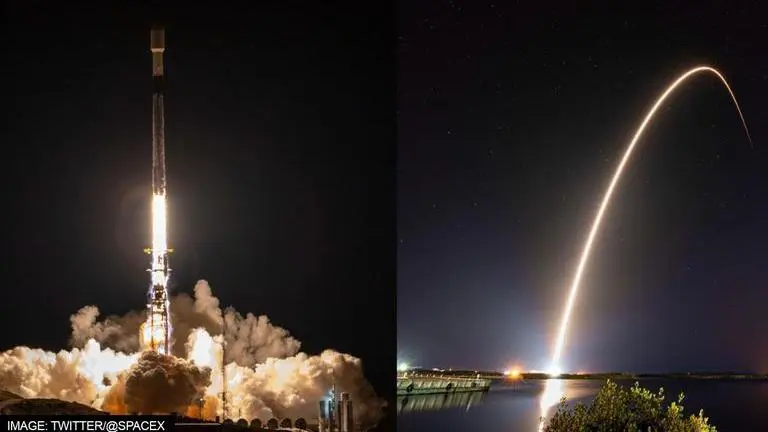Updated 21 January 2022 at 13:37 IST
SpaceX's Starlink satellites affect asteroid-hunting space telescope's images: Study
A recent study revealed that disruptive light streaks by SpaceX' Starlink satellites have harmed a significant percentage of photographs captured by the ZTF.
- Science News
- 2 min read

A recent study revealed that disruptive light streaks by SpaceX's Starlink satellites have affected a significant percentage of photographs captured by the Zwicky Transient Facility (ZTF) - an asteroid-hunting facility. The archival pictures taken between November 2019 to September 2021 revealed a total of 5,301 satellite streaks. In 2019, SpaceX successfully launched its Starlink internet satellite constellation. Almost 1,800 Starlink satellites are now orbiting the Earth at a height of about 550 kilometres, as per Sputnik.
The ZTF observatory in California opened its telescope eye in 2017. The observatory scans the entire sky for momentary brightening or unexpected emergence of objects that are only visible for a short time. It looks for dying stars' supernova explosions and asteroids travelling close to Earth. As per the new analysis by the observatory, created streaks in a substantial portion of the telescope's views as they passed overhead. Images capturing the twilight sky around sunrise and sunset are the most affected, the findings revealed.
Starlink megaconstellation's expansion affected twilight pictures
The researchers stated that these observations are especially crucial for discovering possibly lethal asteroids coming from the sun's direction, the Scientific American reported. With the expansion of the Starlink megaconstellation, the ratio of affected twilight pictures has climbed dramatically, from 0.5% in 2019 to 20% in 2021. However, only around 15% of SpaceX's constellation satellites are currently in orbit, implying that the overall impact would be significantly greater, the study noted.
Astronomers concerned about Starlink satellites' impact on future discoveries
Furthermore, SpaceX intends to boost its internet-beaming fleet to 42,000 spacecraft in the future. Other firms, such as OneWeb, Amazon, and China's SatNet, have similar plans, the report stated. "We don't expect Starlink satellites to have an impact on non-twilight photos. But it may suffer if the satellite constellation of other companies goes into higher orbits" Przemek Mróz, the lead author of the study, said in a statement. However, the study also noted that since SpaceX began installing visors on their satellites, the brightness of the craft, as well as the brightness of the streaks, has decreased by a factor of five. Since the first set of Starlink satellites launched into orbit in May 2019, astronomers have been concerned about the potential influence of the satellites on future discoveries.
Advertisement
Image: Twitter/@SpaceX
Published By : Anurag Roushan
Published On: 21 January 2022 at 13:37 IST
